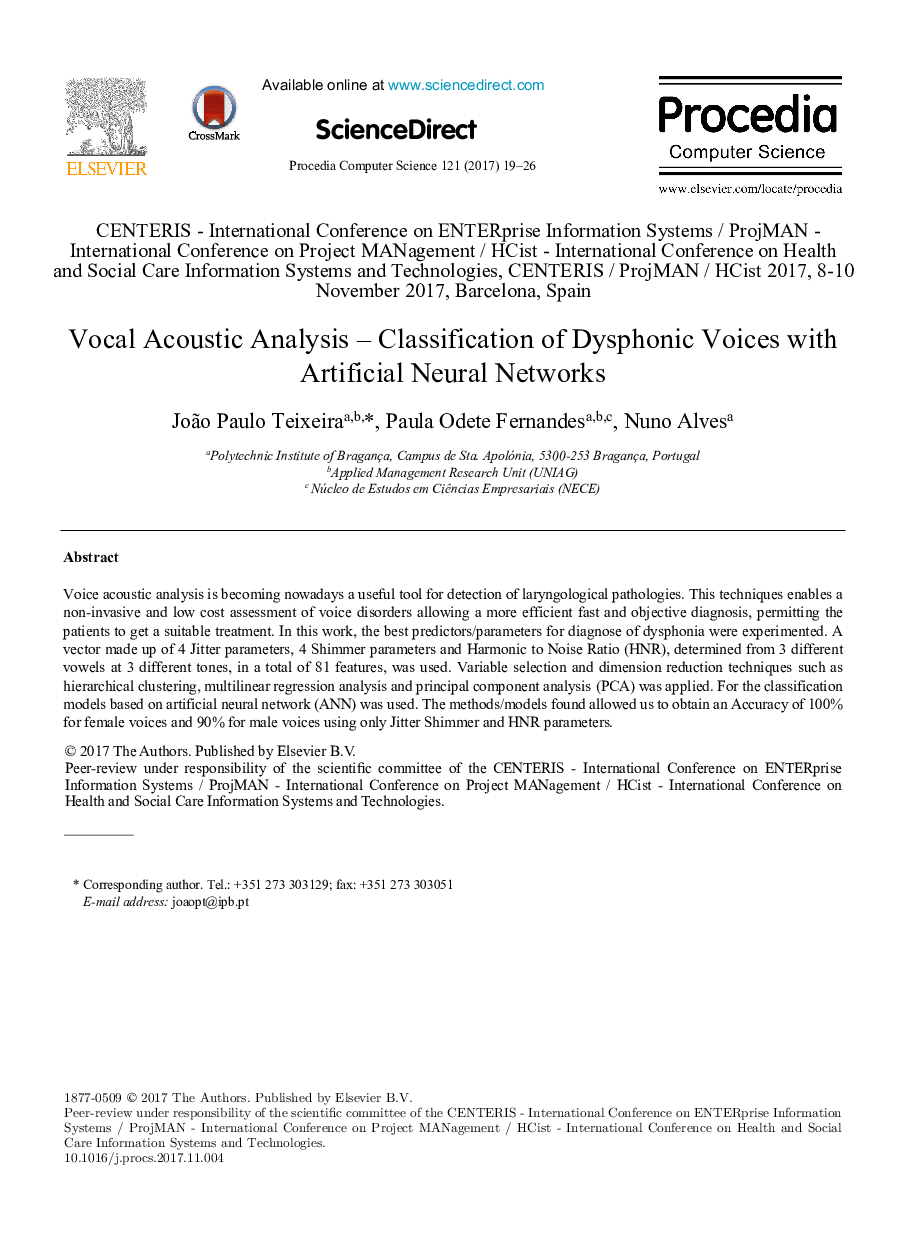| Article ID | Journal | Published Year | Pages | File Type |
|---|---|---|---|---|
| 6901421 | Procedia Computer Science | 2017 | 8 Pages |
Abstract
Voice acoustic analysis is becoming nowadays a useful tool for detection of laryngological pathologies. This techniques enables a non-invasive and low cost assessment of voice disorders allowing a more efficient fast and objective diagnosis, permitting the patients to get a suitable treatment. In this work, the best predictors/parameters for diagnose of dysphonia were experimented. A vector made up of 4 Jitter parameters, 4 Shimmer parameters and Harmonic to Noise Ratio (HNR), determined from 3 different vowels at 3 different tones, in a total of 81 features, was used. Variable selection and dimension reduction techniques such as hierarchical clustering, multilinear regression analysis and principal component analysis (PCA) was applied. For the classification models based on artificial neural network (ANN) was used. The methods/models found allowed us to obtain an Accuracy of 100% for female voices and 90% for male voices using only Jitter Shimmer and HNR parameters.
Related Topics
Physical Sciences and Engineering
Computer Science
Computer Science (General)
Authors
João Paulo Teixeira, Paula Odete Fernandes, Nuno Alves,
